27 Feb Report on the occurrence of mycotoxins in Chinese feedstuffs 2017

This report is a statistical summary of the more than 1100 analysis that we made in our laboratory of clinical services during 2017. Determinations of total aflatoxins (AFLA), vomitoxin (DON), fumonisins (FUM), T2-toxin (T2) and zearalenone (ZEN), and were carried out in samples of feedstuffs provided by our Chinese customers.
GENERAL VIEW OF MYCOTOXIN CONTAMINATION
Taking a look to the general levels of contamination of all samples, only 0.5% of the samples were negative to mycotoxins; 4.8% of the samples were contaminated with only one mycotoxin and 94.7% of the samples were positive to two or more mycotoxins.
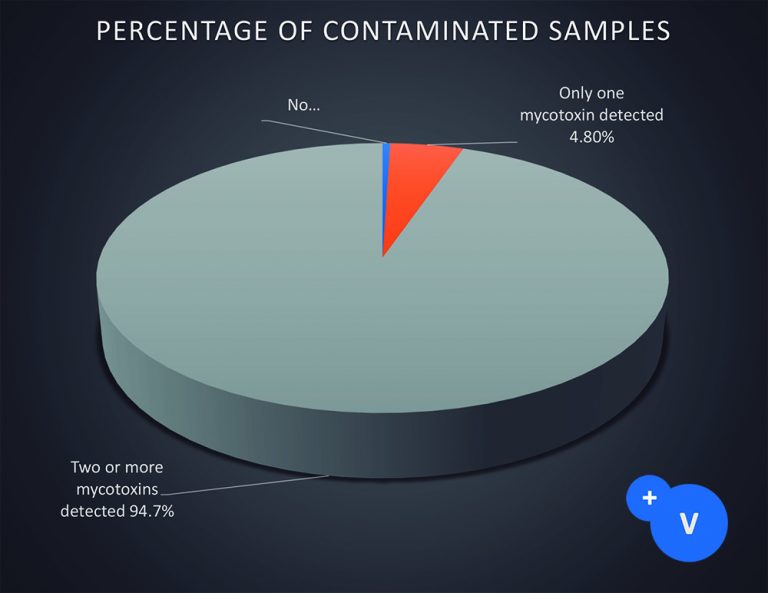
The most frequently found mycotoxin was deoxynivalenol (DON, vomitoxin): almost 90% of the samples were positive while 58.75% showed a contamination above the recommended safety limit.
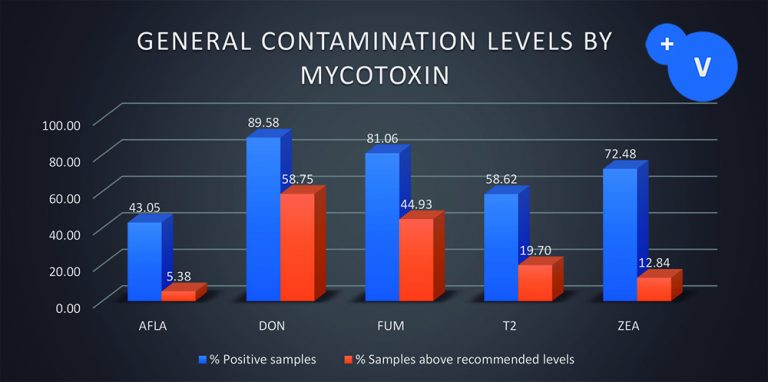
The second most common mycotoxin was fumonisin (81% of contaminated samples), and 44.93% of the feedstuffs were above the advised limits. Zearalenone was the third most found mycotoxin: 72.48% samples were positive and 12.84% above the recommended limits for each species.
RESULTS BY SPECIE
Statistics on mycotoxin contamination in swine feedstuffs
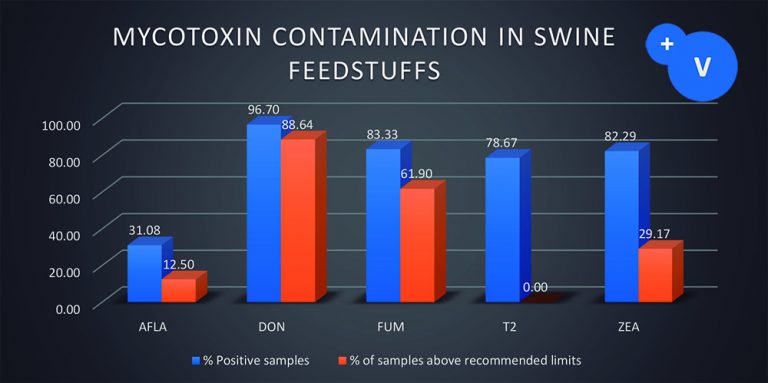

DON (vomitoxin, deoxynivalenol) was the most frequently found mycotoxin (96.70% of positive samples) and 88.64% were above the recommended limits. As it is well-known, this toxin related to impaired feed intake, decreased performance and alterations of gut health.
The contamination by fumonisins was the second most important (83.33% of positive samples) and 61.90% of the samples exceeded safety limits. In pigs, the negative effects of fumonisins are linked to low immunity and respiratory diseases.
The occurrence of zearalenone (82.29% of positive samples, 29.17% above recommended limits), and T2-toxin (78.67% of positive samples, 0% above recommended limits) was also high.
Statistics on mycotoxin contamination in broiler feedstuffs
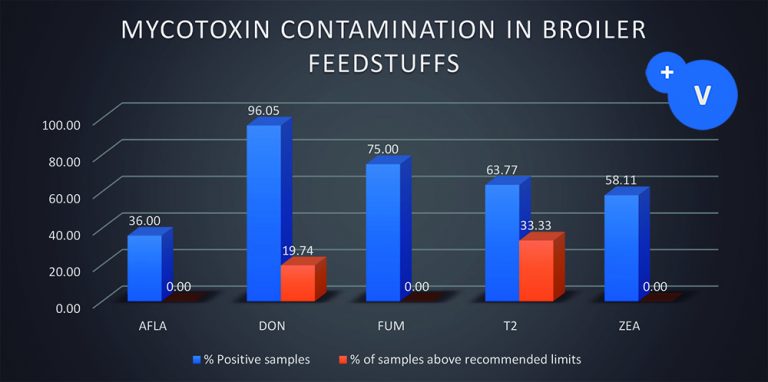

The most common mycotoxin in broiler feedstuffs was vomitoxin (96.05% of positive samples, 19.74% above the recommended limit). This mycotoxin is related to impaired feed intake, reduced growth and digestive diseases.
The contamination by fumonisins was the second most important (75% of positive samples) but no sample exceeded safety limits.
The occurrence of T2-toxin was the third most frequently found (63.77% of positive samples, 33.3% above the recommended limit). This mycotoxin is linked to oral and digestive ulcers and lesions in liver. The presence of T-2 toxin indicates that the feedstuff is contaminated by non-analyzed mycotoxins such as HT2-toxin, that are much more toxic than T2-toxin itself. As a consequence, the actual toxic effects of T2-toxin may be worse than the laboratory results may indicate.
Statistics on mycotoxins in feedstuffs for layers and breeders
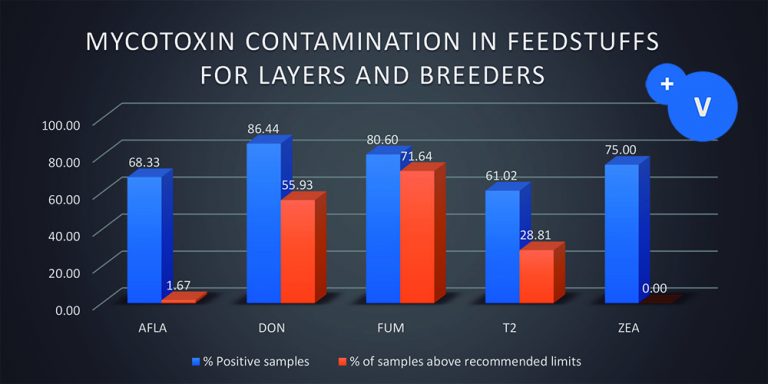

The most widespread mycotoxin in feedstuffs for layers and breeders was vomitoxin (86.44% of positive samples, 55.93% above the recommended limit), which is related to decreased productivity, egg defects and digestive diseases.
The contamination by fumonisins was the second most important (80.6% of positive samples, 71.64% above the recommended limit). Fumonisins are related to poor feed conversion, deficient egg quality and impaired gut heath.
Feedstuffs for layers and breeders show high contamination levels. Besides vomitoxin and fumonisisns, the contamination by zearalenone (75% of positive samples), T2-toxin (61.02% of positive samples) and total aflatoxins (68.33%) was also elevated.
CONCLUSIONS
The results of this mycotoxin survey reiterate the importance of performing a mycotoxin determination of the feedstuffs prior to feeding them to the animals. We offer a professional analysis service that determinates the mycotoxin levels your feeds, raw materials or milk and helps to make a risk assessment.
We also want to underscore that, although there are a lot of mycotoxin binders in the market, PlusBind© and PlusBind Bio© show better adsorption rate for all mycotoxin than competitors, thanks to their strategic blends of highly active mycotoxin sequestering silicates.

Certain health statements may not be applicable in your region.

